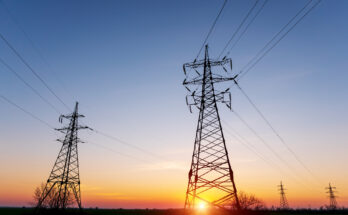There is a shortage of green energy that cannot keep up with the demand for energy throughout the world. A short-term remedy is to re-evaluate and prepare for the future. Leaders from across the globe have set their goals for reducing emissions via renewable energy at COP26 in Paris.
Renewable energy is expected to account for almost all of the world’s additional electricity generation capacity by 2020, according to the International Energy Agency (IEA). Global demand for renewable energy continues to outpace supply, resulting in a shortfall in supply.
Energy output from renewable sources—including hydropower, wind and solar PV—is on course to rise substantially over the next two years – by 8% in 2021 and more than 6 % in 2022,” according to International Energy Agency research released this week, “renewables will be able to supply barely half of the predicted increase in worldwide energy consumption over the next two years.”
Renewable energy sources like wind and solar, which have grown rapidly in recent years, will need to be heavily invested in by utilities if they are to fulfil the COP26 targets. Battery technology is making significant progress toward large-scale application, so utilities will need to spend more money on it.
Another critical focus is the need to teach or reskill more specialists in wind, solar, and hydroelectric power generation. Last year’s COP26 agreement focused heavily on the need to retrain conventional energy employees to fill new renewable energy employment. Governments, businesses, regulators, and employees must work together to achieve this aim, as the IEA reminds out. Other than renewable resources, there are currently many new tools that may assist decision-makers in determining the most efficient way to spend their money.
Producers can narrow the supply-demand gap for a variety of energy sources while also anticipating future shortages thanks to sophisticated financial modelling tools. Using asset investment planning (AIP) software, decision-makers may investigate a variety of “what-if” scenarios to decide the best route for service enhancement and contingency plans in the event of a problem. In order to fulfil short, medium, and long-term energy needs, these insights may help improve the deployment of assets and resources (such as labour and finances).
Utility companies may also save money by reducing the amount of energy they use. In addition to supporting cost-cutting measures, efficient investment also facilitates the faster introduction of new power sources into the grid.
When it comes to capacity and dependability, one North American manufacturer discovered a solution. With the use of innovative asset management systems, this company was able to create the best possible CAPEX and OPEX plans.
These methods deliver the highest potential return on investment, while also limiting risk and maintaining high service levels throughout the company’s extensive transmission network. In addition, despite the fact that there is a labour shortage, it may create plans for putting these initiatives into action.
One of the many critical aspects that will enable utilities to speed the attainment of their net-zero transition targets is AIP software and the availability of trained renewable energy specialists.





